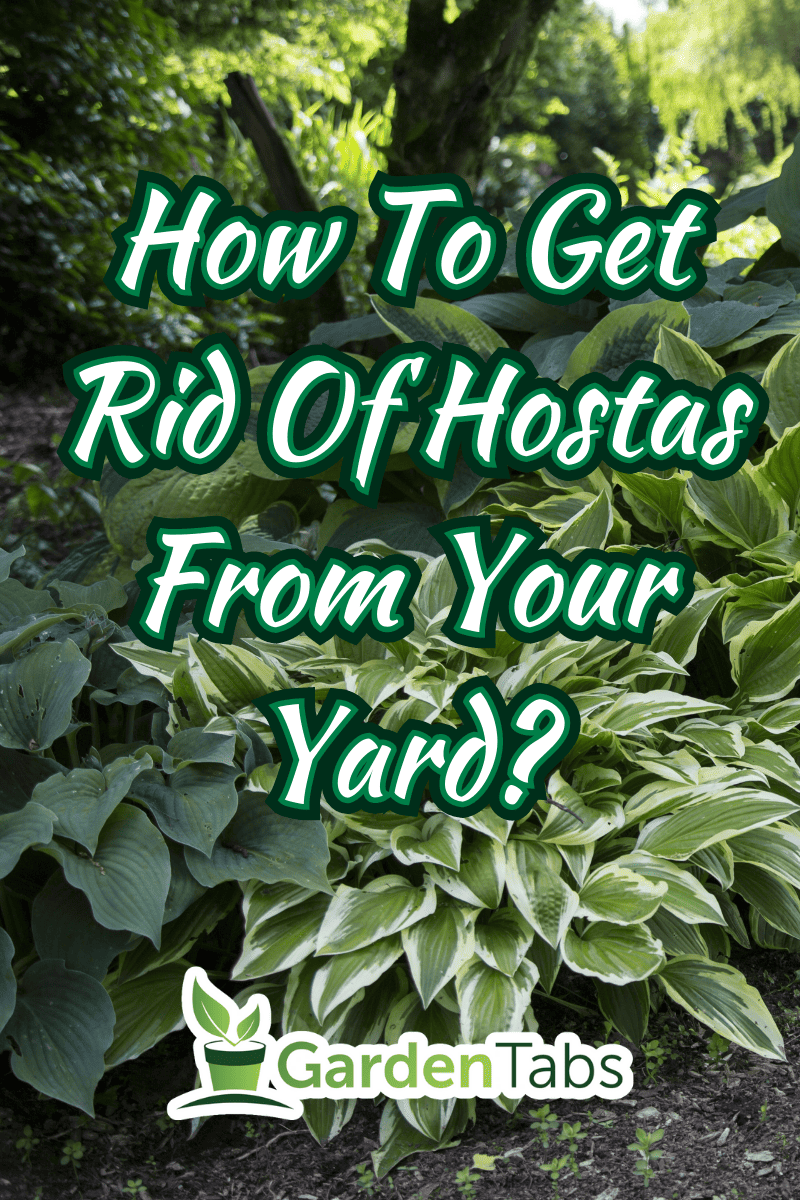Hostas come in a variety of shapes, sizes, and colors. However, you may want to remove them and plant something else or move them to another part of the yard. If that is your plan, we have researched to show you how to go about it.
There are several ways to get rid of hostas from your yard. You could do any the following:
- Pull them by hand
- Use weed killer
- Use vinegar
- Pour boiling water on the plant
- Use a weed burner
Keep reading to learn different ways to remove the hostas plant from your yard and keep them from coming back. Included in the post is a cost estimate for getting rid of this plant.
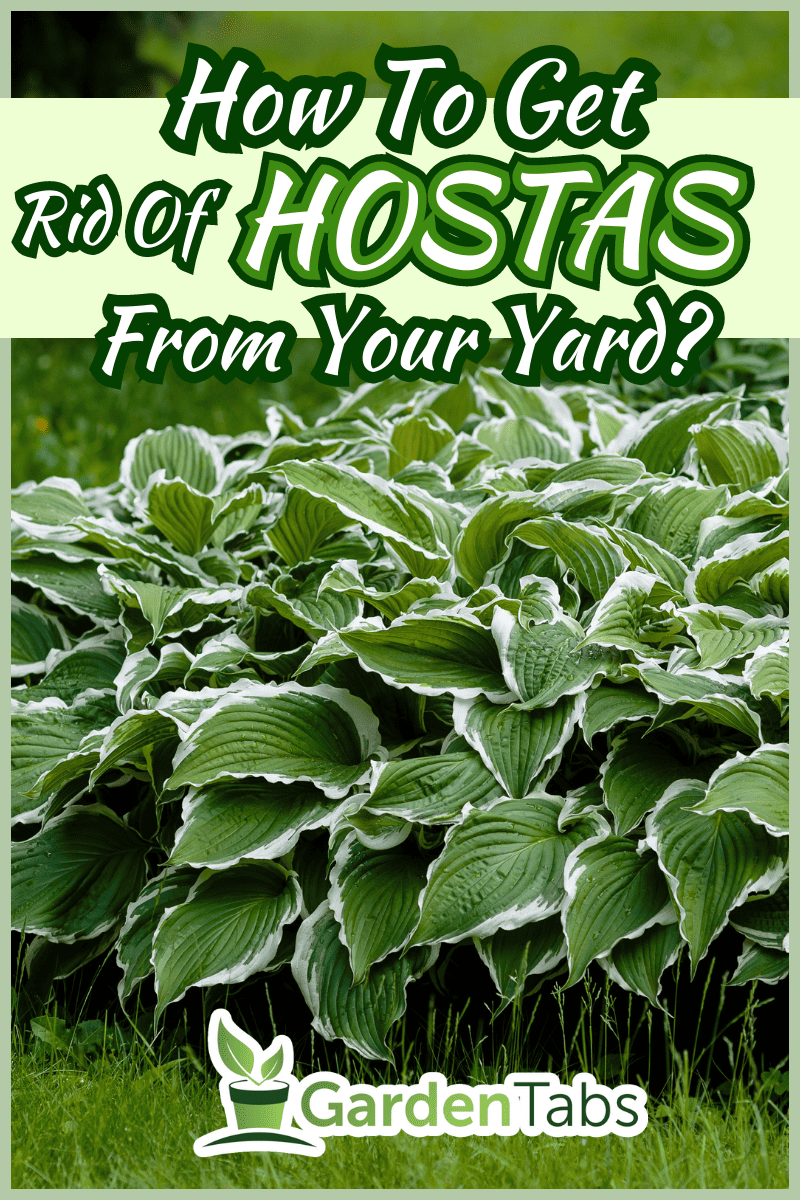
5 Ways To Get Rid Of Hostas From Your Yard

Sometimes you can get bored of one plant and want to get rid of it, no matter how beautiful it makes your yard look. The hosta is one such plant. Use the following methods to remove or weed it out.
Pull Them By Hand
Pulling out the unwanted plant should be your first option before using weed killers. Chemicals can potentially harm the environment. To pull out the hostas, follow the steps below:
1. Water The Hostas
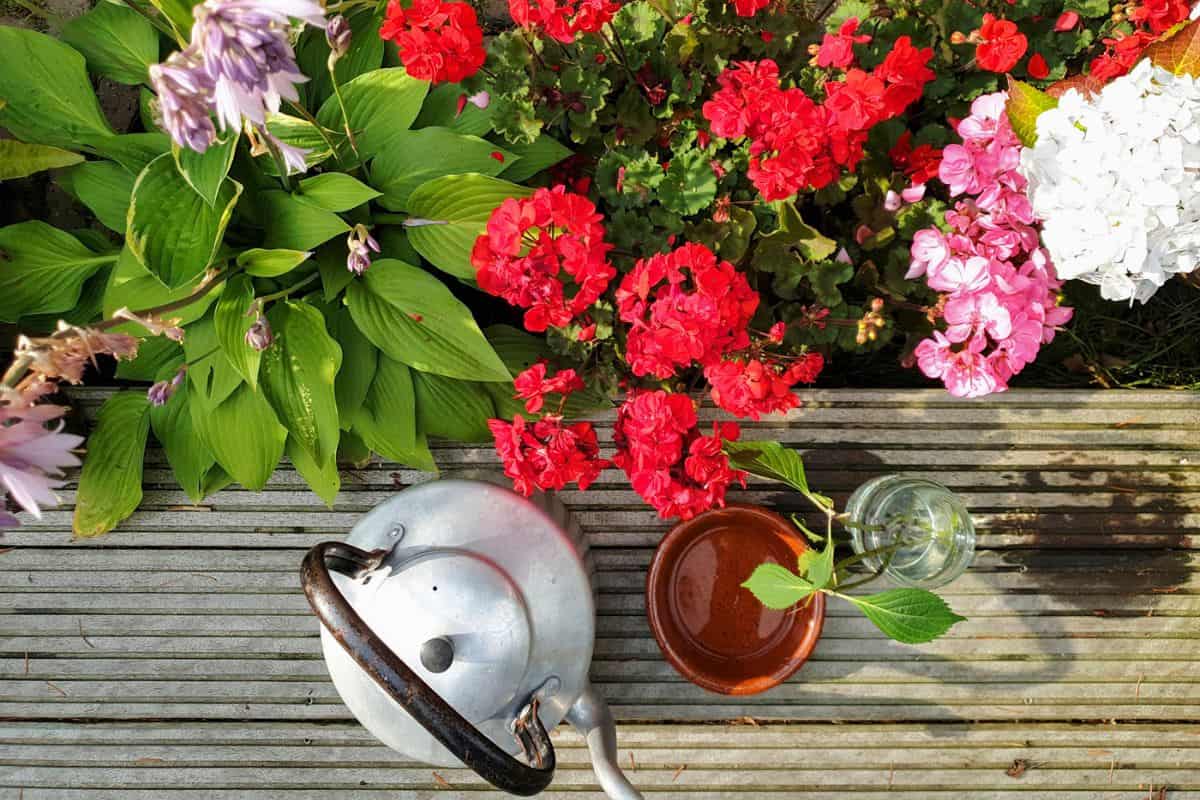
Water the hosta plant with an adequate amount of water before uprooting the plant. It’s much easier to uproot it when the soil is moist. Digging in hard ground can be a difficult task.
2. Dig Up The Plant
The roots of the hosta plant don’t grow deep into the soil. They usually are a foot deep. Dig up the plant, including the roots using a shovel.
Go beyond one foot downwards and one foot beyond the plant’s perimeter. Do this for each plant until you uproot all the plants.
3. Dispose Or Transplant The Hostas
After uprooting the plant, you may transplant it (if your initial plan is to move it). Dispose of the plant if you want to get rid of it completely. Leave the plant in the hot sun for several days to kill it and prevent it from sprouting.
4. Dig Up New Roots
Dig up any new roots that sprout. You might have to do this for a while because getting rid of the hostas can be difficult. Remember to uproot them from the roots, not just cut them.
Use Weed Killers
Before you begin, choose an herbicide like the one above and read the instructions carefully. You can consult a gardening expert if you're unsure of which one to choose.


You can find this weed killer on Amazon.
Follow these steps when using an herbicide:
1. Water The Hostas
Suppose there has been no rain recently; water the hostas before applying the herbicide. The herbicide works best when applied to plants absorbing water and growing well.
2. Spray The Herbicide
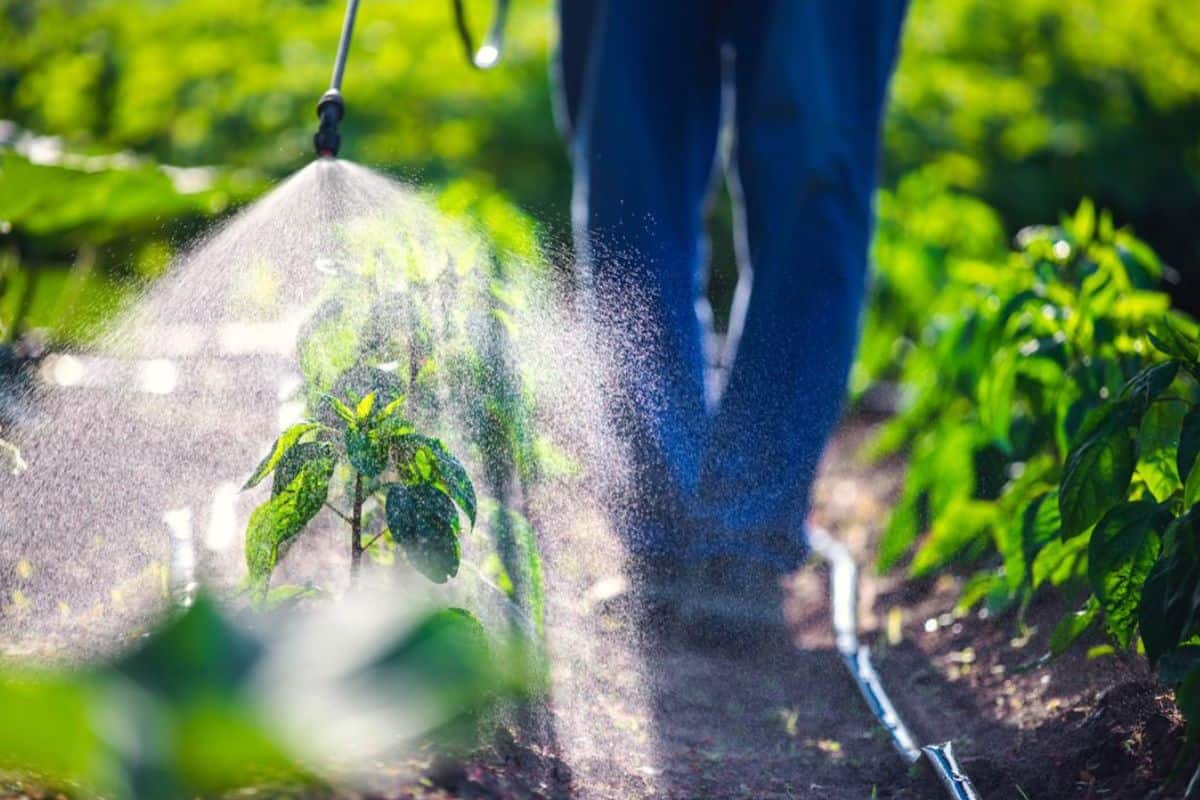
Spray the herbicide directly on the leaves, ensuring you cover the whole plant, but it should not drip. Be careful not to pour it on the surrounding plants you want to save.
3. Monitor Often
After spraying the herbicide, watch out for any hostas that may emerge. Respray them with the herbicide. Alternatively, as mentioned earlier, you can dig up the new sprouts and dispose of them.
Use Vinegar

You can use vinegar to kill plants. For perennial plants like hostas, use a 20% vinegar solution. You can buy this online, from general retailers or garden centers.
It’s best to apply it on a warm and sunny day. Using it on a windy or rainy day can limit the vinegar’s effectiveness. Remember to take the necessary precautions by wearing protective gear. Wear eye protection, gloves, a face mask, and appropriate clothing, such as overalls.
Unlike the vinegar you usually use in your house, vinegar with a much higher concentration can harm your skin, eyes, and respiratory system.
Next, spray it directly on the plants you want to eradicate. If that is impossible, use a brush to paint the vinegar onto the plant. The high acid concentration in the vinegar will burn and dry the plant’s leaves.
However, it’s good to note that vinegar will work best on young plants. Therefore, it may not work on hostas well rooted in the soil. After applying the vinegar, expect your yard to smell like salad dressing.
It’s a plus for you as it will keep off insects and animals like deer and rabbits away for some time. Wait for at least two weeks before applying again.
Use Boiling Water
Some gardeners recommend using boiling water to kill plants. This method is effective if you pour water on plants that are in a small area.
Before you start, wear protective gear such as heavy-duty gloves, closed-toe shoes, long pants, and a long-sleeved shirt. Protect yourself from the boiling water that might splash on you accidentally.
The steps are as follows:
1. Boil The Water
A tea kettle is the best for this task. Pour water into it, place it on the stove burner and boil it.
2. Remove The Kettle From The Stove
Wear gloves and turn off the stove. Remove the kettle from the stove carefully, and quickly go to where the plants are without wasting any time. Reach the plants before the water cools down.
Killing a plant is effective when the water is boiling. The boiling water destroys the cell structure of the plant and the roots, killing it instantly.
3. Pour Water On The Plants
Direct the kettle spout on the plants. Pour the water slowly on all the plants to avoid splashing on the nearby plants you want to keep.
Pour the water as close as possible to the plant. If you can, it is best to do this while kneeling to prevent the water from cooling while in the air.
Use A Weed Burner
Plants subjected to the heat produced by this gadget cannot survive. The flame boils the plant’s water and sap, causing the cell to expand to its walls. The plant eventually wilts and dies.
Even when using this method, wear protective gear before burning weeds. To use the weed burner, wet the soil and then direct the heat to the center of each plant. Be careful not to burn the surrounding plants that you want to keep.


You can find this weed burner on Amazon.
Afterward, remove the plant by hand. Check after one week, and if the plants have grown again, reuse the weed burner. If your hostas plants were well established, you might have to apply this method many times until the plant dies.
Fire can be hazardous. Have a fire extinguisher and water nearby in case of an emergency.
The Cost Of Removing Unwanted Hosta Plants

Removing your unwanted hosta plants will generally cost between $30 and $60 per hour. Expect to pay between $30 and $200 for labor to remove the plants using herbicides.
To hire pre-emergence weed control services, you will pay anywhere between $70 and $110 per treatment. It is a treatment that kills unwanted plants before they germinate.
Overall, getting rid of unwanted plants is affordable. If gardening is your hobby, you will likely spend much less if you already have the skills.
In Closing
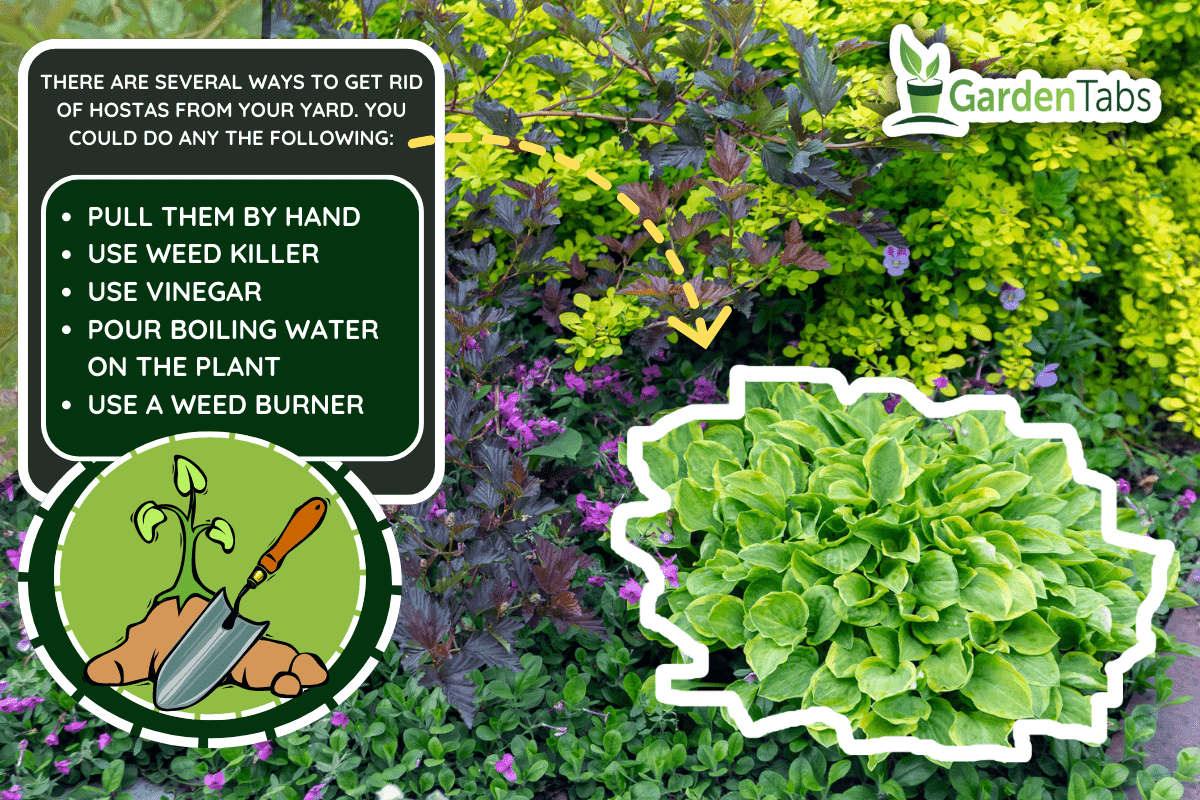
Most homeowners love changing the landscape in their yards from time to time to enhance the overall outdoor look of their homes. From the several methods discussed here, you can choose the most applicable to get rid of the hosta plant from your yard.
You may decide to do so on your own or hire help. After getting rid of the plant, there’s the task of ensuring it does not grow back.
To learn more about hostas, read our other posts below:
How To Overwinter Hostas In Pots
Will Hostas Grow Under Trees? [Inc. Pine, Walnut, Maple, Cedar & More]


